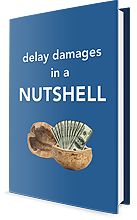Powerful Tools for Successful Project Management
Introduction
Whether you are an entrepreneur, leader in a large corporation, or fall somewhere in between, proper use of project management tools can help you successfully deliver large tasks or projects on time and within budget. Unlike other management trends, project management is founded on a proven record in the segments of the working world where it has long been used with success, like the construction industry. With a little training and practice you can apply their proven methods to your work, too.
What is Project Management?
Project management is both a process and a set of tools and techniques concerned with defining the project’s goal, planning all the work to reach the goal, leading the project and support teams, monitoring progress, and seeing to it that the project is completed in a satisfactory way. The key term in this definition is the word “project.” A project is a specific product, event, or outcome; it is not an ongoing process. For example, the operation of the HR department is not a project; it’s an ongoing process. Implementation of a new health insurance program, however, is not ongoing. It is a particular event or outcome – a project. Many of the things we do every day are best viewed as projects; from the mundane – preparing dinner – to the complex – developing a new drug and getting it approved by the FDA. The advantage of seeing an objective in this light is that it allows you to immediately recognize the need for the proven management tools common to project work, enhancing your chances for success.
What are Project Management Tools?
Project managers typically manage three basic project characteristics – the scope or extent of the work, including the quality of the work; the cost of the work; and the time to complete the project. Of all the tools in the project manager’s tool belt, the project schedule is often the most useful. In order to prepare a reasonable schedule for a project, it is important to know at least two things – what needs to be done and the resources available. If you know the resources required, you also, essentially, know the costs associated with the effort. Consequently, contained within the schedule are the three most important aspects of a project that the project manager is tasked with managing – scope, cost, and time. The usefulness and, hence, the power of a project schedule is derived from the schedule’s ability to absorb and make sense of enormous amounts of information, to make the complexities of the project accessible to all participants, and to allow the project manager to juggle these considerations with a single management tool.
Modern schedules are based on a scheduling technique developed in the Philadelphia region during the 1950s, called Critical Path Method Scheduling (CPM.) Most significant construction projects in the world now use CPM schedules to manage time. Many expanded the management tasks assigned to the project schedule to include resource management, cost management, and document control. It can also be accessed through project-specific websites, giving all project participants real-time information on the status of the project. These highly integrated, user-friendly project management systems, though adopted most widely by the construction industry, have equal application in other industries and for many kinds of public and private organizations – basically anybody involved in project oriented tasks.
![P3-schedule [Powerful Tools for Successful Project Management][PrimaveraP3]](https://www.traunerconsulting.com/wp-content/uploads/P3-schedule.jpg)
Schedules can be a powerful tool, helping you to manage your project successfully.
Scott Lowe is a Principal of TRAUNER and is an expert in the areas of critical path method scheduling, construction claim preparation and evaluation, and specification writing. He can be reached at scott.lowe@traunerconsulting.com.
If you liked this article, be sure to sign up on the left side of our website to receive our Ideas & Insights in your email. Be sure to check your email after signing up!
Click here to get our free book on delay damages.

